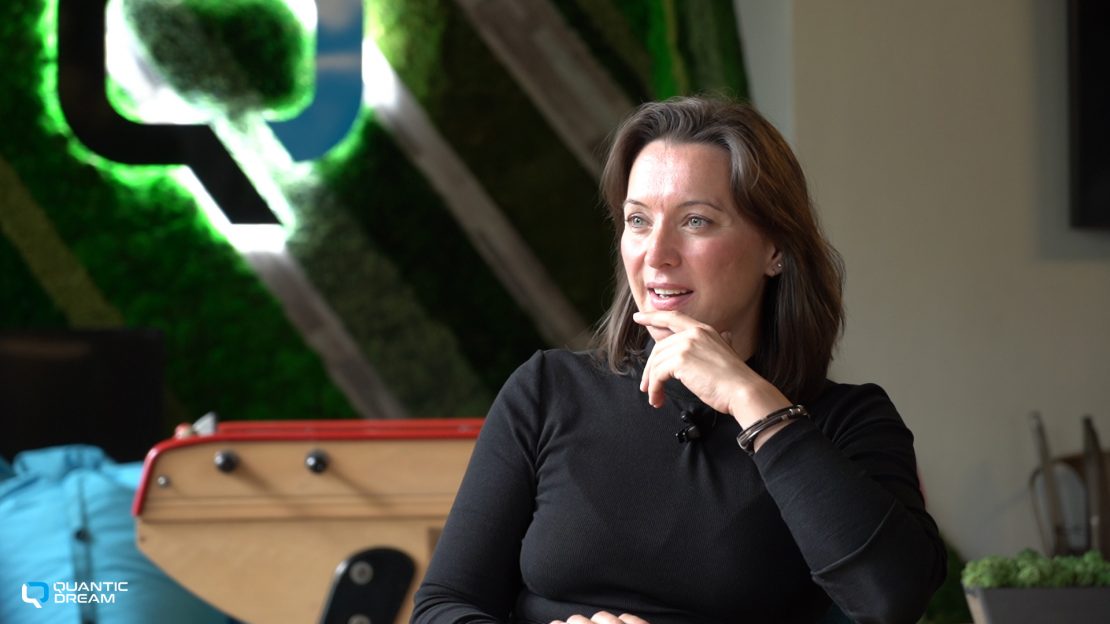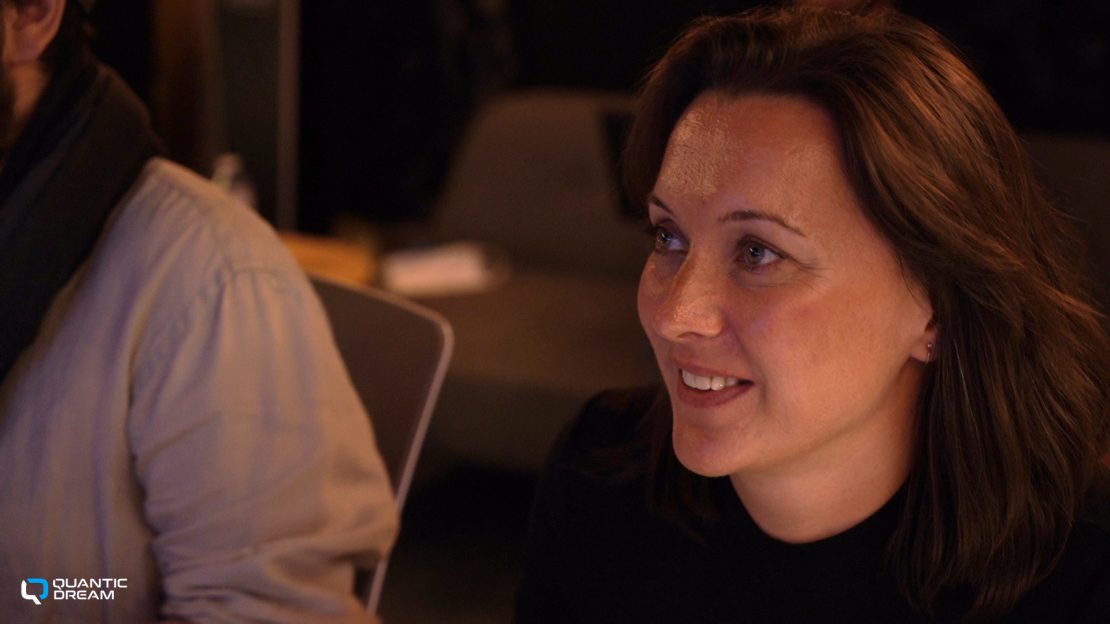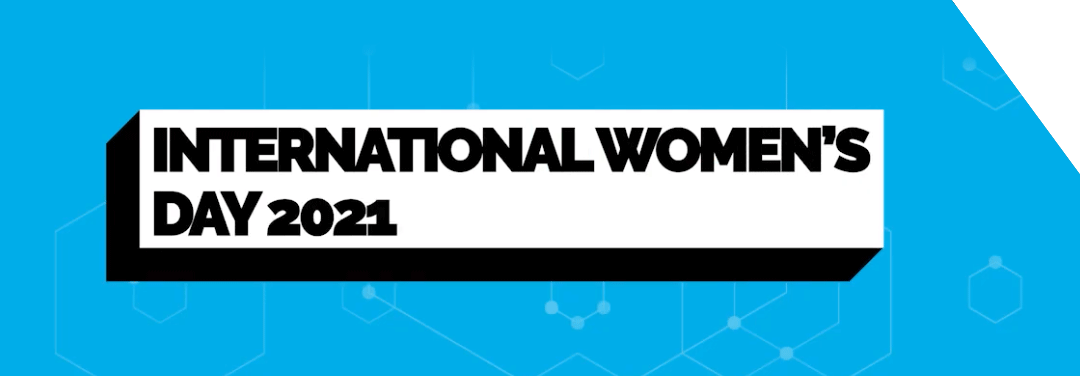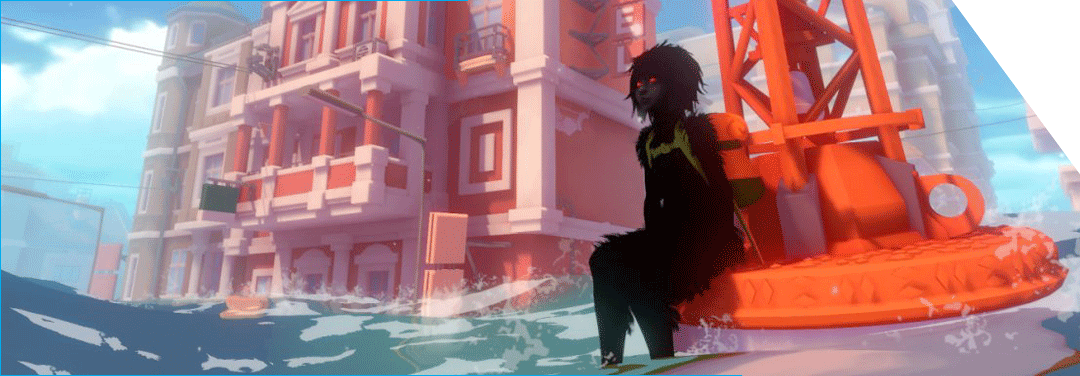CORNELIA GEPPERT: SAILING ON THE SEA OF SOLITUDE

Sea of Solitude: The Director’s Cut is now available, exclusively on Nintendo SwitchTM! Developed by the indie studio Jo-Mei, the game features Kay, a young woman lost in a mysterious world submerged by the sea. No more spoilers, we won’t ruin the joy of the discovery! What we can tell you though, is the new features brought by this director’s cut: a reworked script by Stephen Bell (writer of What Remains of Edith Finch), a brand-new voice casting, international subtitles, new animations for Kay, remade cinematics, the addition of a photo mode and the possibility to control the flair with the gyroscope.
Of course, we want to celebrate the release of the game with Cornelia Geppert, the co-founder of Jo-Mei and creator of the Sea of Solitude experience; we sure couldn’t resist the pleasure of chatting about the project’s origin!
QD: Halo Cornelia! We’re excited by the idea of Jo-Mei being the first ever third-party studio to work with Quantic Dream as a Publisher; what’s the origin story of this partnership?
Cornelia Geppert: Hi Quantic Dream! Please call me Connie. ? To be honest I’m still stunned that we’ve already been working for quite a while together with Quantic Dream now! Many in my team, including me, have been fans since Fahrenheit: Indigo Prophecy. So, I met [Quantic Dream co-CEO] Guillaume de Fondaumière at the 2019 Gamescom, where we chatted about Jo-Mei’s future games and soon after, Quantic Dream approached us with the idea of publishing Sea of Solitude for Switch, but as a Director’s Cut, an enhanced version. You can imagine that I screamed in joy for about a week straight because of that surprising amazing offer! We heard that there are several fans of Sea of Solitude at Quantic Dream and that alone felt like a dream to us ?
QD: What experience from this collaboration with Quantic Dream will you carry with you in the future?
Cornelia Geppert: Quantic Dream is a highly artistic publisher itself. Talking with David Cage and really exchanging creative thoughts and ideas with him and his team is simply amazing. We could feel that we suddenly had a partner who thinks and feels the same way we do. We could also see that in every aspect we worked with them, like for example on the marketing side as well. How much care and attention the Quantic Dream Publishing department put into promoting Sea of Solitude made me almost a bit teary eyed as there is no bigger reward for an artist as when you see that others also care a lot for your art, as Quantic Dream does.
QD: Let’s go back in time way further. What is your professional background and what motivated you to create your own game studio?
Cornelia Geppert: I’ve been drawing since I was a toddler! I remember I got a very bad grade once just because my teacher saw that my schoolbooks where full of my Sailor Moon and Akira drawings! At 17 I got to work full time at the biggest comic book studio in Germany, as an artist. It was an incredibly exciting time moving out of my parents’ house, from a small town to big Berlin and being a comic book artist as my first job ever.
A couple of years later I wanted to try out new things, so I started working as a storyboarder and prop designer in the animation industry for a French studio. During that time, the first Games Academy opened up in Berlin and a friend told me about it, as I was a huge gamer since I was 9, right after the Berlin Wall fell and we finally got easier access to games. I was born in East Germany. So, I applied to that Academy for a scholarship and got it. I became the first woman in that school and could officially call myself a Game Designer after graduating.
My first job was in a bigger studio, where I worked as 3D Modeler, Concept Artist, Cutscene Lighting Artist, Level Designer and I created art for marketing. I wanted to learn and do as much as possible, and I remember one of the bosses told me I was one of the pillars in that studio back then. At that studio I met another “pillar”, my co-founder of Jo-Mei, Boris Munser. He is as creative as me but on top of it also a programming genius. We’ve been great friends for over 15 years now! We worked as a mini team in that bigger studio and we saw that we were creating amazing stuff together, so after that bigger studio shut down, I started jangling him to start our own studio! ? I have a hell of a lot of energy and love also doing all the paperwork etc. So, we had everything we need already with just the two of us and started Jo-Mei in late 2009, early 2010.
We successfully developed many smaller marketing games for companies like Gazprom or BMW, but also started to create free-to-play games and got them published. We started with these kinds of games to get our studio off the ground. We could have gone on forever that way, as we made good money, but artistically I felt more and more unhappy; I had so many stories and crazy creative ideas for games in my head I wanted to get out. So, I started to write a concept for a totally different kind of game, Sea of Solitude, while we still developed our other games.

QD: How did the idea of Sea of Solitude came to you in the first place?
Cornelia Geppert: The first idea of Sea of Solitude was honestly more like a Pokémon in a flooded city, collecting monsters! ? The last free-to-play game we developed, Brave Little Beasties, was a Pokémon-ish kind of game, so I think it was the natural transition from that kind of experience, to deep story driven games. This is when I started writing the first version of Sea of Solitude. But at that point I felt increasingly lonely in my private life; a Berlin newspaper published an article about the increasing loneliness in Berlin and worldwide. I started to slowly change my game idea of catching Pokémon in a flooded city to meeting monsters that feel lonely.
And then I met a man, we fell in love heavily and it was like heaven for quite a while. He opened up to me about his clinical depression and from that point on I started to strongly educate myself about mental health issues of all kinds, as I wanted to desperately to help him get better.
All this influenced my writing on Sea of Solitude in a strong way. The life I literally experienced at the time fuelled the many topics we talk about in our game. Writing the game felt a little like therapy in itself, letting all my thoughts and inner conflicts out and putting it into my art was liberating. Just to mention, not all topics in Sea of Solitude are drawn from my own life, some are inspired by people around me.
QD: Why did you choose to go back to the drawing board and sail again with Kay for this Director’s Cut?
Cornelia Geppert: As you might guess, the development of Sea of Solitude was quite unique and challenging for us too. As a studio we not only made the jump from free-to-play browser games to multi-platform games, but we also jumped to a completely different genre, story driven adventure games, while doubling our team size up to 12 people. And I had this extremely challenging private life, so all this weighted on the quality of Sea of Solitude. I’m still SUPER PROUD of what we achieved with it and that we got it out of the door at all is an achievement, BUT we also knew that Sea of Solitude could have been even better with a little bit more time and some fitting creative heads supporting us. For me it was just wishful thinking but then, to our great surprise, Quantic Dream came along and offered us exactly this.
QD: What advice would you give to those who want to follow your steps in the video game industry, especially women?
Cornelia Geppert: I seem to be a special case as I hear from so many people in the industry that they got harassed or attacked online. I, so far, never experienced anything like that. What I experienced not long ago though, and for the first time, is jealousy around me. What I learned from that and strongly advise to especially women, is to be careful who you choose to work with. Make sure to follow your gut feeling and even if people seem nice and funny, when something feels off, try to take a step back and not be too openhearted.
Other than that, I can just say “get out there”! Go to conventions, get to know industry people, show your art around, online and in real life at conventions. I remember walking through the PAX convention in Boston with my laptop, showing everyone our first prototype and art of Sea of Solitude. This is how I got to know so many important industry people that loved the game and who helped me make SOS publicly visible and successful.
QD: Thank you for sharing these experiences, it sure is important for those who want to follow your steps in this industry! Now, to talk about something lighter, when you’re not working on a game project, what do you dig?
Cornelia Geppert: Okay, now I could talk for hours, I have many hobbies! My favourites are surfing, road trips, bouldering, running, playing games, going to concerts, hanging out in cafes in the sun and drinking a glass of wine with my friends, gardening, hiking, handcraft, music, reading books, theater, comics, cartoons and so much more! I really hope this darn pandemic is over soon so we can all enjoy again any activity we love.
QD: We can’t finish this interview without a question on the theme of the sea! Pick three works (games, films, books, series…) that you’d take on a desert island.
Cornelia Geppert: Hmm, I’m reading Earthsea right now and love it, so I would take that with me to finish it. The comic book series Giant Days is my absolute favourite, so I take that too. Yakuza: Like A Dragon I take too as this game somehow hits so close to home for me in so many aspects, I LOVE the characters and how real and lovely they are written. Also, I’m a huge fan of Dragon Quest! Speaking of which, the Yakuza: Like A Dragon developers made a declaration of love with their game. These are my perfect soul food games.
Thank you very much Connie for all these great answers! Sea of Solitude: The Director’s Cut is available to download on Nintendo SwitchTM, as well as in a limited box edition including an exclusive sticker; a free demo is also available on the Nintendo eShop. You can follow the official Sea of Solitude Twitter here for the latest news on the game; and there’s a “Behind the Scenes” video series coming on YouTube, so you may want to hit the bell to be notified as soon as it goes live!








